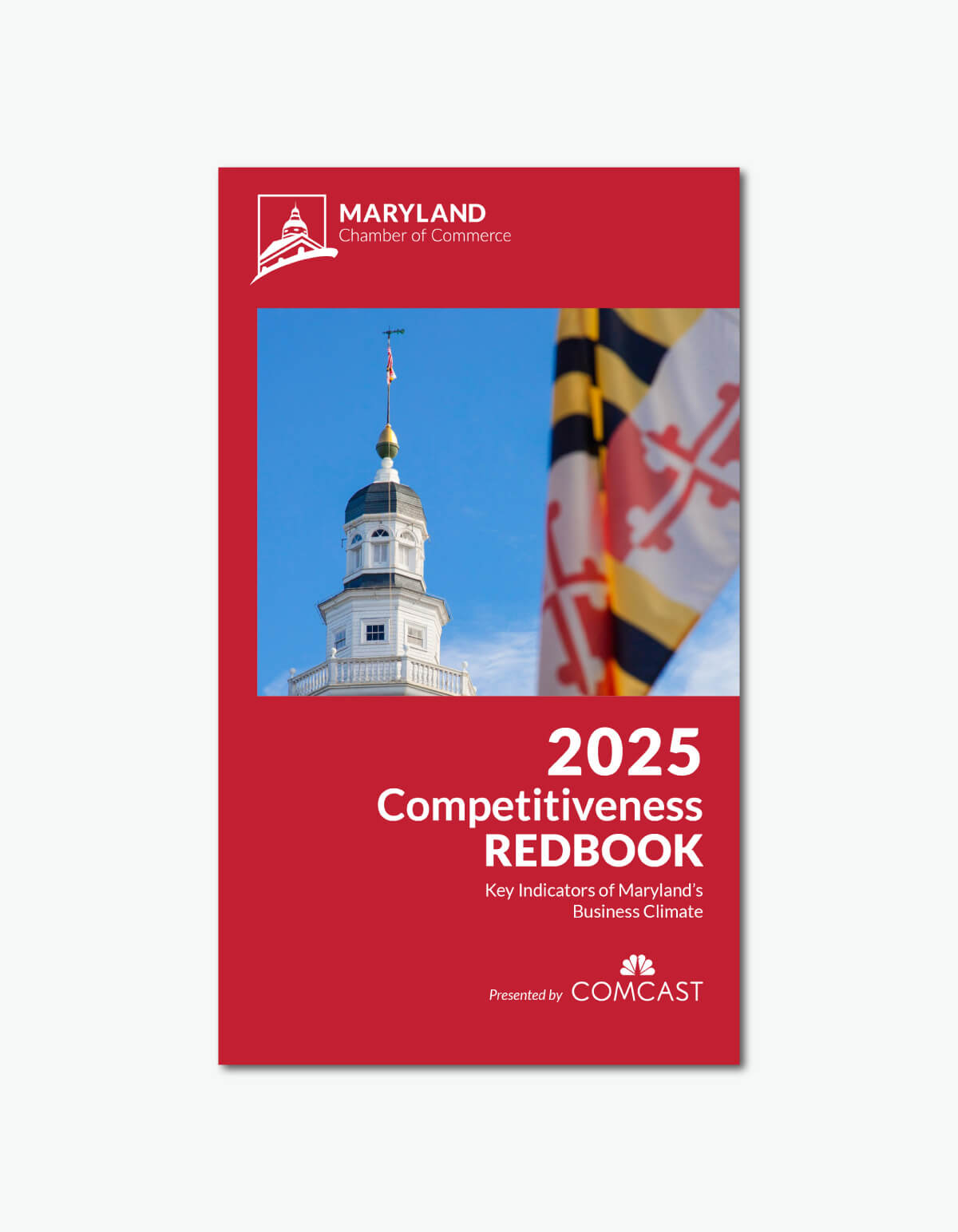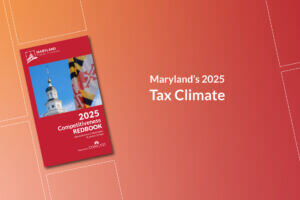Blog
Maryland’s Business Climate: Progress in Pockets, But a Warning Sign Overall
Jul 15, 2025
The latest CNBC Top States for Business rankings confirm what many Maryland employers already feel on the ground: while there are encouraging signs in certain areas, our state continues to struggle with overall business competitiveness — especially compared to our regional peers and national leaders.
Maryland ranks 32nd overall in the 2025 rankings, a one-spot decline from last year and part of a 10-place drop over just two years. That’s a troubling trajectory, particularly when states like Virginia (4th) and Pennsylvania (17th) continue to outperform us, and even smaller states like Delaware (29th) are moving ahead.
Each year, CNBC adjusts the weight of its ranking criteria based on what states emphasize in their economic development strategies. In 2025, the top-weighted category was economy — a metric where Maryland did make some gains. Still, our overall position reflects a deeper issue: persistent challenges with cost, business friendliness and affordability are keeping Maryland from becoming a top-tier destination for growth and investment.
These rankings serve as a national barometer of how attractive each state is to do business — and they suggest Maryland is not viewed as a top-tier state for doing business.
What the Numbers Say
Maryland’s competitiveness story is one of contrasts — with some notable progress in key areas, but persistent weaknesses that continue to drag us down.
Areas of Improvement
- Workforce (up 7 spots to 21st): We’re seeing progress in both the talent pipeline and job availability — a welcome shift as the severe labor shortages that once defined our market begin to ease. While challenges remain, this upward trend could reflect growing alignment between our education institutions, employers and workforce needs.
- Infrastructure (up 14 spots to 23rd): This improvement is encouraging on paper — but it raises questions. Maryland has among the highest energy costs in the region, we import the majority of our energy, and businesses are increasingly warning of looming capacity constraints. Combine that with some of the worst traffic congestion in the nation, and it's clear that while the ranking has improved, the reality may be more nuanced — and potentially fragile without continued investment and reform.
- Economy (up 4 spots to 26th): A modest gain here may reflect Maryland’s steady job market, growth in sectors like life sciences and cybersecurity, or resilience in the face of national economic headwinds. But we’re still just middle of the pack — hardly a beacon for new investment or expansion when compared to fast-growing economies like Florida (1st in economy) or Texas (2nd overall).
- Education (11th) and Access to Capital (14th): These are long-standing strengths. Our universities and research institutions are top-notch, and capital is accessible — but without a stronger business climate, that talent and funding may increasingly flow elsewhere.
But Core Business Climate Weaknesses Persist
- Overall Ranking: Maryland has now dropped from 22nd in 2023 to 32nd in 2025 — marking a 10-spot decline in the last two years.
- Cost of Doing Business: 46th out of 50. Maryland remains one of the most expensive states in the nation to operate a business. High taxes, escalating labor costs and rising utility rates all contribute to the burden. When businesses can find lower costs and fewer regulatory hurdles across the border — or across the country — they do.
- Business Friendliness: 37th out of 50. This metric, unchanged from last year, reflects deep-rooted concerns about Maryland’s regulatory environment. Complex permitting processes, shifting mandates and unpredictable policymaking create a climate of uncertainty that discourages investment.
- Cost of Living: Dropped 19 spots to 43rd. An increasingly unaffordable state makes it harder to attract and retain both businesses and talent. That’s a warning sign for long-term competitiveness.
Falling Behind — National and Regional Context
- Maryland’s 32nd place position puts us behind not just top-ranked business states like North Carolina (1st), Texas (2nd) and Florida (3rd) — known for their aggressive pursuit of business growth — but also high-cost states like California (22nd) and New York (23rd). Both outperform Maryland despite facing similar challenges around taxes and affordability, largely because they’ve built unmatched reputations in innovation, access to talent and industry ecosystems.
- Meanwhile, Virginia continues to be a top-tier state with strengths in infrastructure, education and tech — offering a powerful regional contrast just across the Potomac. And Delaware, long seen as a niche competitor, has leapfrogged Maryland by improving its economy, workforce and regulatory appeal.
Why it Matters — And What Maryland Must Do
These rankings aren’t just numbers — they’re a window into how Maryland is perceived by job creators, investors and entrepreneurs. They shape decisions about where to hire, grow, or relocate. And they’re a reflection of whether Maryland is making it easier or harder to do business.
While there are encouraging signs of gaining ground in workforce and infrastructure, they’re not enough to offset the drag of high costs, low business friendliness and growing concerns about affordability. Maryland’s assets aren’t translating into competitiveness the way they should. We cannot expect to build a thriving economy if we remain one of the most expensive states to operate, one of the least business friendly, and among the hardest to afford to live in.
To become truly competitive — regionally and nationally — Maryland must act with urgency and purpose:
- Streamline regulations to make the state more navigable and predictable for businesses of all sizes.
- Reform cost structures and tax policies that are pushing companies — and workers — elsewhere.
- Modernize and invest in infrastructure, especially in energy and transportation, to meet current and future capacity needs.
- Double down on our talent and innovation assets, ensuring they serve as magnets for economic growth rather than missed opportunities.
Maryland has the potential to lead. But right now, we are not keeping pace. To change that, we must focus on what it takes to make Maryland a competitive, compelling place to do business — today and into the future.



